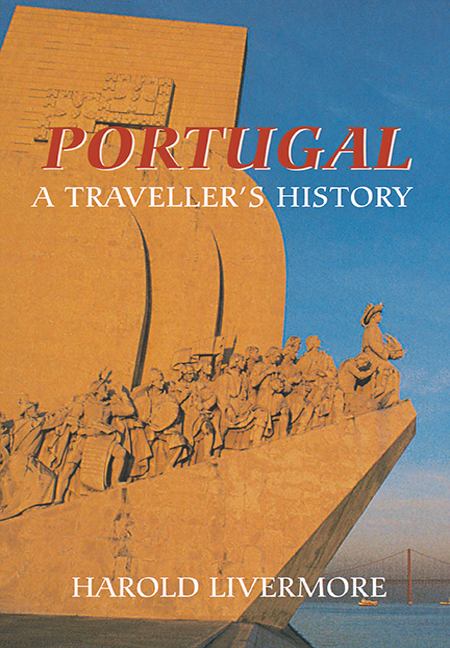Book contents
- Frontmatter
- Contents
- List of Illustrations
- Foreword
- 1 Introduction
- 2 Portugal in History
- 3 Before Portugal
- 4 Islamic Portugal
- 5 Architecture
- 6 Painting
- 7 Music
- 8 Birds
- 9 Fishing
- 10 Portuguese Wines
- 11 Lisbon
- 12 North from Lisbon
- 13 Oporto
- 14 North of Oporto
- 15 Interior Portugal
- 16 Alentejo
- 17 Algarve
- Afterword
- Index
- Frontmatter
- Contents
- List of Illustrations
- Foreword
- 1 Introduction
- 2 Portugal in History
- 3 Before Portugal
- 4 Islamic Portugal
- 5 Architecture
- 6 Painting
- 7 Music
- 8 Birds
- 9 Fishing
- 10 Portuguese Wines
- 11 Lisbon
- 12 North from Lisbon
- 13 Oporto
- 14 North of Oporto
- 15 Interior Portugal
- 16 Alentejo
- 17 Algarve
- Afterword
- Index
Summary
Fish forms an important part of the Portuguese diet. Lampreys are found in the Lima and shad (sável) in the Tagus and Douro, and trout are bred in the numerous new reservoirs or albufeiras. But the sea is by far the greatest source. In ancient times the most important catch was the tunny. The Romans also relished garum, made of preserved fish. The chain of tanks and industrial plants of Phoenician times can be traced from Lisbon to the Algarve, and also extends to North Africa. After the discovery of America, the great fishery was the Newfoundland Banks, and a large sailing-fleet built at Aveiro and Figueira da Foz left Lisbon every year to catch cod, which was dried to make bacalhau. With the imposition of national limits, this fish is now imported. Sailing-ships are still built at Figueira and Aveiro, where the Dom Fernando, the largest of the nineteenth-century schooners, was rebuilt in 1998 to serve as a naval museum.
The usual sea-going fishing-craft is the trawler or traineira, with both sail and engines. The main deep-sea fishing is for the sardine, the tunny, and a variety of fish, some not easily translatable into English. Smaller trawlers serve for in-shore fishing and are joined by wooden rowing-craft which have elongated prows like crescentmoons and are painted in bright colours. The sheltered lagoons of the Algarve abound in shellfish and in decorative small craft.
The principal sea-fisheries from north to south are: in the Minho, Viana do Castelo, with its festival in the middle of August dedicated to Nossa Senhora da Agonia, who protects fisherfolk; Oporto draws its supplies mainly from Matosinhos, the fishing-village out of which the deep-sea Port of Leixões sprouted to accommodate ocean-liners; south of the Douro, Aveiro remains an active fishery but Figueira da Foz is now best known as a summer resort.
Nazaré was one of the fishing-ports associated with Alcobaça, and is famous for the customs of its fisher-folk and their tartan shirts and skirts. Until recently the boats were drawn up by teams of men and women or by oxen which waited by the beach: these have given way to tractors. Peniche is the largest port for catching and canning sardines. While Nazaré is open and exposed, Peniche has the advantage of two beaches, one sheltered from gales from the north and the other from the south.
- Type
- Chapter
- Information
- Portugal: A Traveller's History , pp. 72 - 73Publisher: Boydell & BrewerPrint publication year: 2004

